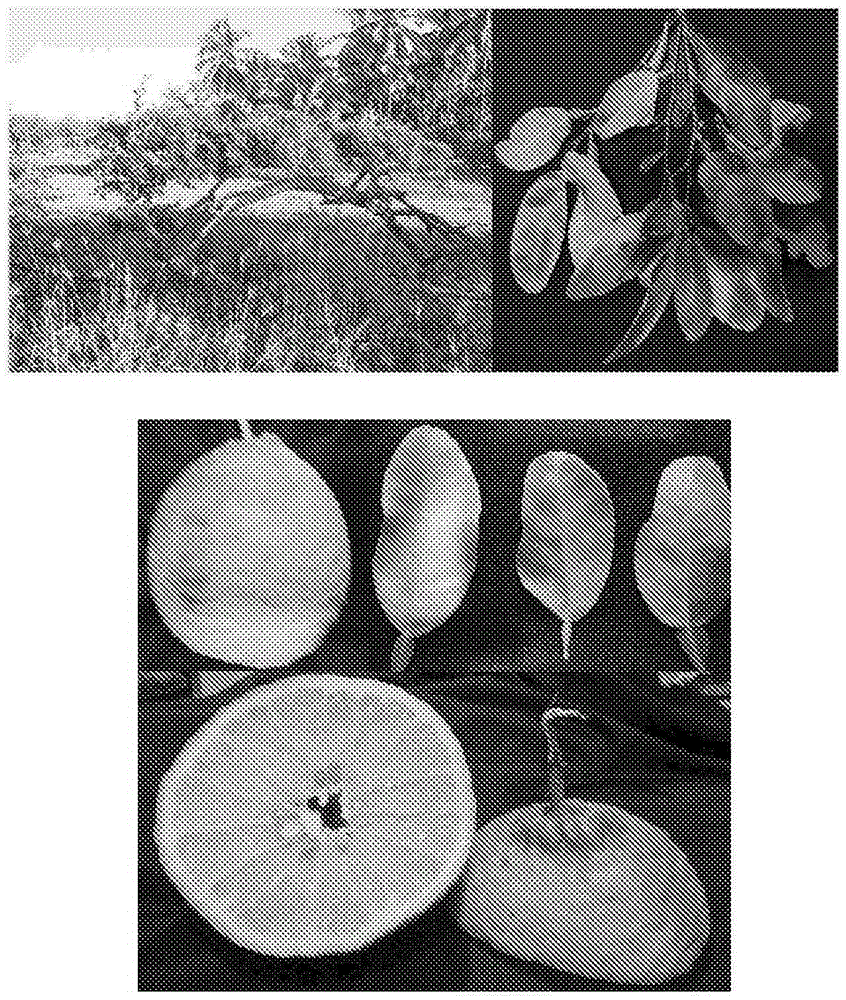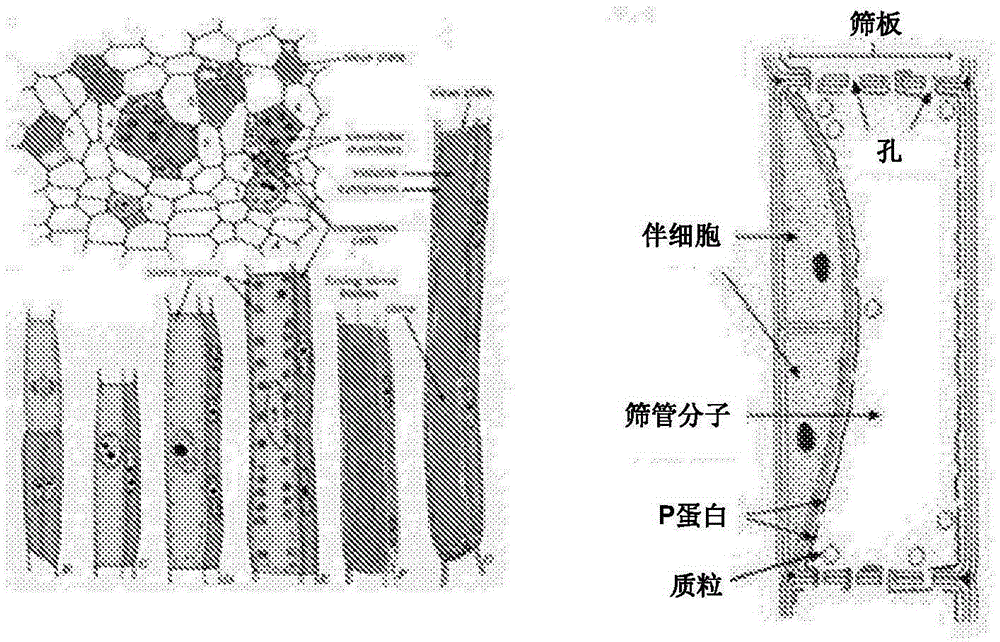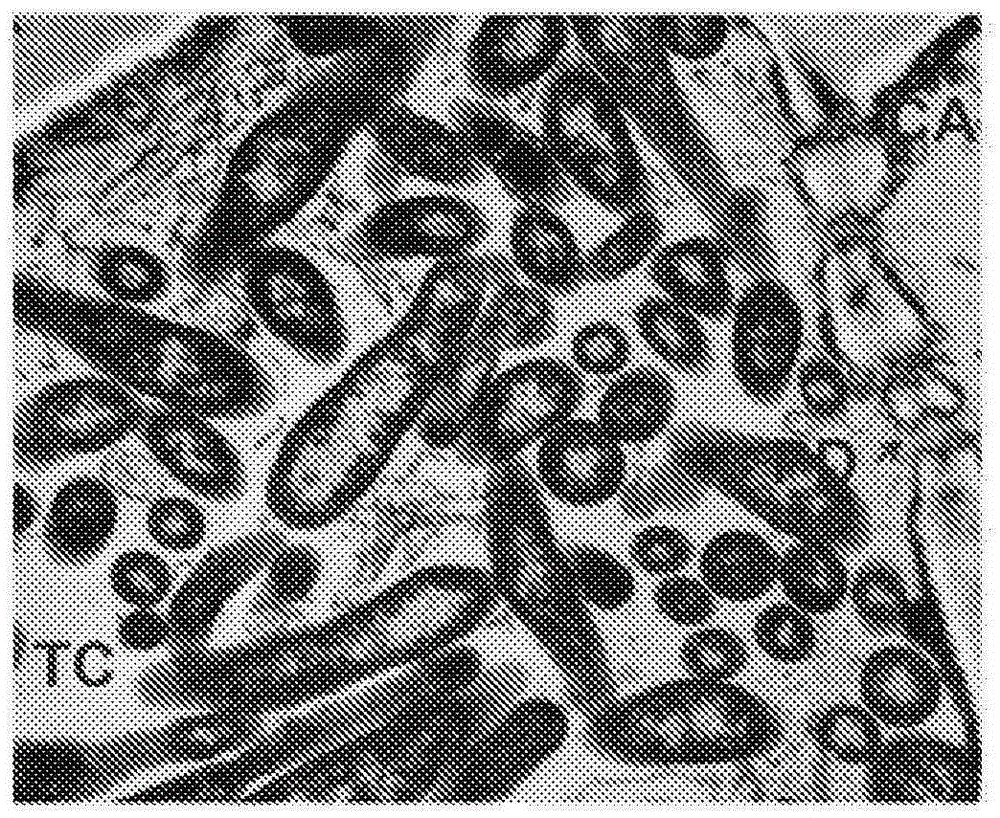Plants resistant to pathogenic microorganisms growing in vascular tissues
A microbial and antimicrobial technology, applied in the direction of plant peptides, plant products, botany equipment and methods, etc., can solve problems such as no effective control and/or coping methods
- Summary
- Abstract
- Description
- Claims
- Application Information
AI Technical Summary
Problems solved by technology
Method used
Image
Examples
Embodiment 1
[0125] Example 1. Obtaining the CsPP16 expression unit comprising the 35S promoter of cauliflower mosaic virus
[0126] To obtain expression units with the sequences listed in Table 4, they were synthesized and assembled in the order listed; they were sequenced to verify the absence of insertional mutations during assembly, and finally cloned into cells containing carbenicillin antibiotic resistance. Genscript vector.
[0127] The resulting recombinant plasmids were transformed into competent cells of A. tumefaciens and A. rhizogenes. We use the antibiotic carbenicillin, which is a more stable and synthetic form of penicillin. Plasmid DNA was extracted from resistant bacteria and the presence of the recombinant plasmid was verified on an agarose gel.
[0128] To verify the presence of the gene of interest with antimicrobial activity inserted into the vector or in plants transformed thereby, specific oligonucleotide primers are used for PCR amplification; for example, in th...
Embodiment 2
[0129] Example 2. Obtaining a CsPP16 expression unit comprising the vascular promoter AT5G59880
[0130] To obtain this expression unit, the shorter version of the promoter 35S of cauliflower mosaic virus (SEQ.ID.No. 2) or the longer form (SEQ.ID.No.7). As in Example 1, the sequences were synthesized and assembled in the order listed, they were sequenced to verify the absence of insertional mutations during assembly, and finally cloned into a Genscript vector containing carbenicillin antibiotic resistance.
[0131] As in Example 1, the resulting recombinant plasmids were transformed into competent cells of A. tumefaciens and A. rhizogenes. We use the antibiotic carbenicillin, which is a more stable and synthetic form of penicillin. Plasmid DNA was extracted from resistant bacteria and the presence of the recombinant plasmid was verified on an agarose gel.
[0132] Table 4
[0133]
[0134] Table 4 (continued)
[0135]
[0136] To verify the presence of the gene of...
Embodiment 3
[0137] Example 3. Transient expression of a construct of the invention in HLB-infected Mexican lime plants using Agrobacterium
[0138] Agrobacterium was grown in LB medium at 30°C under constant agitation to achieve an O.D. (600nm) of 0.4. Acetosyringone was added to the cells at a final concentration of 140 micromolar and incubated for an additional two hours under the inducer. Bacteria were harvested by centrifugation and resuspended in transformation medium ( Figure 7 ).
[0139] The method of inoculating adult plants involves removing the lignified bark with sandpaper, exposing the green photosynthetic tissue. Pre-wet swabs with recombinant bacteria containing some of the expression vectors described in Examples 1 and / 2 were placed on the tissue and resuspended in transformation medium. The swabs were temporarily fixed around photosynthetic tissue not covered with plastic, and the plants were covered with plastic bags and kept in high humidity for two days. Under inc...
PUM
 Login to View More
Login to View More Abstract
Description
Claims
Application Information
 Login to View More
Login to View More - R&D
- Intellectual Property
- Life Sciences
- Materials
- Tech Scout
- Unparalleled Data Quality
- Higher Quality Content
- 60% Fewer Hallucinations
Browse by: Latest US Patents, China's latest patents, Technical Efficacy Thesaurus, Application Domain, Technology Topic, Popular Technical Reports.
© 2025 PatSnap. All rights reserved.Legal|Privacy policy|Modern Slavery Act Transparency Statement|Sitemap|About US| Contact US: help@patsnap.com



